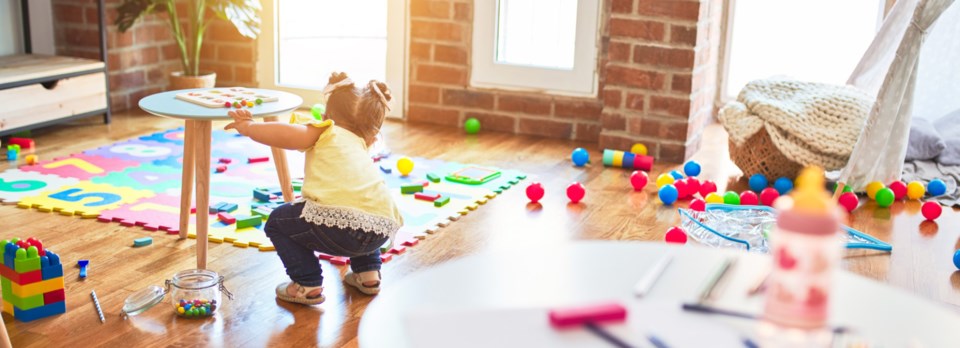Now that we’re spending so much time at home, I predict that it won’t be just our houseplants and pets that will thrive. Upending the tightly scheduled days of parents and children has provided more time for an activity that allows children to flourish: play.
Who knows what the new normal will be once the pandemic has subsided, but one possibility is that the somewhat lost art of play will emerge as one of the saving graces of our time.
Play is such a simple concept. It is a pleasurable activity that we do just to do it. It is voluntary, meaning that we can stop when we want, and it provides us with opportunities to develop our own world view and to learn about the perspectives of others.
We all have memories of playing with our friends, our siblings, our cousins and with kids we just met and, if we squint back very carefully at the past, we might remember that we were in charge of our own play — not the grown-ups.
Lately, though, and as a function of the world we live in, this type of simple play has been edged out of children’s lives, in some cases replaced with activities like soccer and gymnastics, ballet and baseball, music and swimming lessons. And then there are the screens — so many screens. But now the calendar is empty and there is time to play.
My plea
What about schoolwork, parents may ask? And what about routine? And what about my sanity? Can’t I please let them be in front of screens? Of course. What we’re all trying to achieve is a workable balance. Children need to have a predictable yet flexible routine to their days.
This may involve some schoolwork, depending on the age of the child, and it will very likely involve some screen time, again, depending on the child’s age. My plea, however, is that we understand the invaluable learning that comes with play, and that play is recognized as a vital part of the daily routine. Play and play-based learning is crucial to children’s development and learning.
Instinctively, we know this, but we sometimes trivialize play when we refer to children as “just playing” or when we use play as a reward for when the real work is done. It can be difficult to articulate the benefits of play. To help, let me share how I’ve spelled out the meaning of play with the acronym “P.L.A.Y.”
P: Problem-based learning
Whenever a child plays, they are seeking to solve a problem.
Just watch your child at play and see if you can figure out what problem is being solved. Is it how to make the puzzle pieces fit? How to make the block tower stand? How to convince baby brother to be a dog for the fifth day in a row? This type of problem-solving is a much more effective way to learn than more abstract teaching methods like worksheets.
L: Language-rich
Listen to the language that children use when they play together. When children play house or play store, they use sophisticated language that we don’t ordinarily hear from them in other non-play situations. They are the grown-ups now and their language reflects this. Vygotsky, the Russian psychologist said:
“In play, a child always behaves beyond his average age, above his daily behaviour. In play, it is as though he were a head taller than himself.”
During play, children are motivated to read and write — writing notes, menus, tickets for theatre plays, signs that instruct others, like “don’t touch this.” It is where they see the meaning and function of print which helps to build a strong foundation for literacy learning.
A: Active environment
“A” stands for “active environment.” Active learning means hands-on, getting dirty, “face and eyes into it” type of play. It means using all the senses to learn and where the player gets to choose the play materials, the type of play, the play participants. It is when they get to be in charge. The role for adults is to provide the space, materials and opportunity and then see what happens.
Y: Young children
“Y” stands for “young children.” Children are fellow human beings with rights, including the right to play. Canada is a signatory to the UN Convention on the Rights of the Child that declares children have the right to play. Play is just that important.
There are times in history that our rights and responsibilities as human beings come into clear focus. This is one of those times. Let children play.![]()
Christine McLean, Assistant Professor, Child and Youth Studies, Mount Saint Vincent University
This article is republished from The Conversation under a Creative Commons license. Read the original article.
